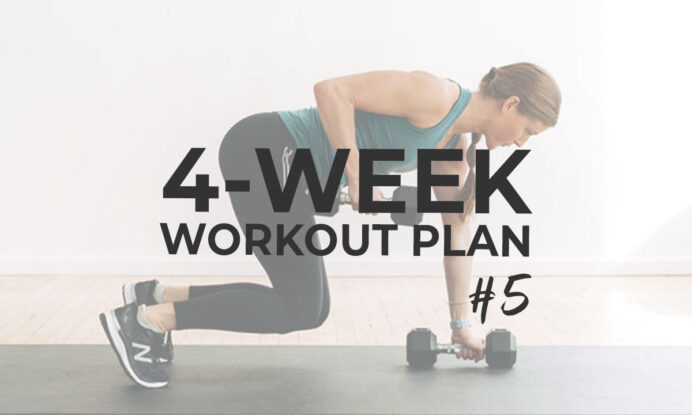
Progressive Overload Workout Plan (Overload 30)
Hit new strength goals and break through fitness plateaus with Overload 30: a free progressive overload workout plan designed to build serious strength and muscle definition in just 30 minutes a day. This is a strength-focused program designed to help you progressively build strength over time, complete with a downloadable workout tracker PDF and daily follow-along videos on YouTube to guide every rep.
You’ll never know what you’re capable of – until you train like this.
Overload 30 is my first ever progressive overload program, designed to build real muscle in just 30 minutes a day.
Each rep you put in matters: which is why I’m giving you a free printable workout tracking system so you can measure your progress.
This program pushes you to train with purpose. After decades of training, I’ve learned that the basic lifts are the ones that get the best results. Moves like squats, deadlifts, chest presses and back rows are staples in the fitness community for a reason: they work.
Overload 30 is classic strength training – with a functional twist. Unlike traditional bodybuilding programs that focus exclusively on aesthetic muscle growth, Overload 30 will push you to functionally train in multiple planes of motion, improve your balance and stability, and increase your mobility, all while building muscle like never before.
This strength-based program utilizes progressive overload techniques like:
- Higher Training Volume. In this program, each exercise is repeated x3 sets. Doing more sets increases training volume, which is a key driver of muscle growth.
- Split Training Workouts. Although full-body workouts are functional, split training (or focusing on a specific muscle group during your workout) is more effective for building muscle. Split training workouts tend to have higher intensity per muscle, meaning you can get closer to failure (and therefore, muscle growth) than you would in a full body workout.
- Tracking System. To achieve progressive overload, you need to gradually increase the intensity of the workout, typically over a period of 6-12 weeks. That’s why I’ve created a free workout tracking PDF so you can measure your progress over time.
This 2-week program includes 10 unique workouts. I recommend repeating the program x2-3 times (making it a 4-week to 6-week program) for best results.
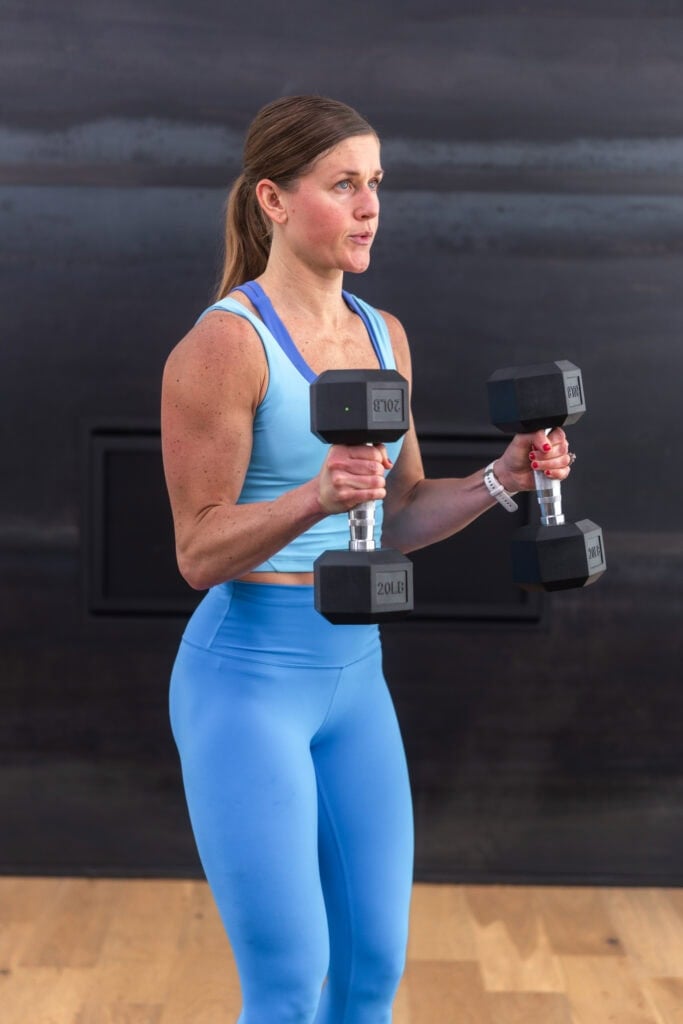
LET’S GET STARTED
Download Your FREE Workout Plan & Workout Tracker Here
What Is Progressive Overload?
Progressive overload is a type of strength training that involves gradually increasing the intensity or difficulty of your workouts over time. Muscle growth (hypertrophy) depends on progressive overload, which means putting enough stress on the muscles to stimulate adaptation.
You can achieve progressive overload multiple ways:
- Increase weight: Start with a weight that allows you to complete your desired number of repetitions with correct form, and aim to increase the weight 2-5% each week.
- Increase repetitions: If lifting heavier weights isn’t possible yet, make your workouts more challenging by increasing the number of reps.
- Increase sets: If you want to increase repetitions over time, start by increasing working sets.
- Decrease rest time: This is a great way to increase the intensity of your workouts without adding load or volume.
- Increase range of motion: Engage more muscle fibers and increase strength while improving your mobility over time.
Each of these increases stress on the body in some way, which is what allows your body to adapt and rebuild stronger.
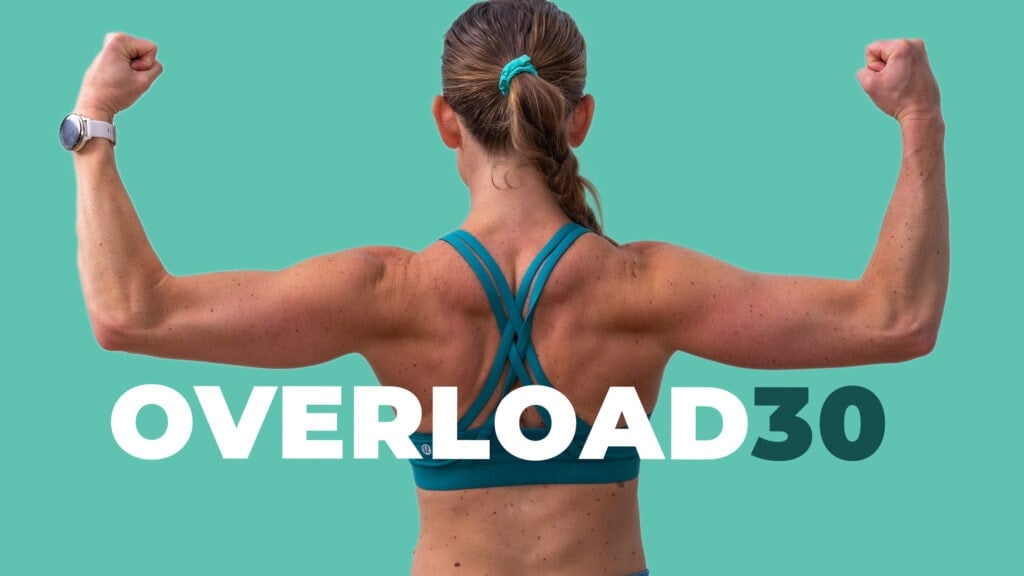
This Progressive Overload Training Plan is for Anyone Looking to:
- Increase muscle definition and strength in the upper body, lower body and core.
- Follow a multi-week program, tracking progress over time.
- Improve athletic and cardiovascular fitness level.
- Increase core strength, flexibility and mobility.
- Burn calories, lose weight and burn body fat at home.
- Establish a solid weight training routine at home in just two weeks.
This free, 2-week workout plan is modeled after my signature strength training programs: Strong 20, Stronger 25, Build 30, SplitStrong 35, Perform 20, HIITStrong 35, MetCon 100 and Zero 30. These programs are different from my other free workout challenges because they include 10 daily workout videos (a new workout video each day) that were cohesively filmed as one complete program.
You can find more information about which signature program is right for you (and the order I recommend progressing through my programs) in this free Nourish Move Love Program Guide. If you’re interested in a combination of strength training and pilates, a 3-day split or other workout plan types, I have those available as well! If you’re wondering whether you should prioritize strength training or cardio in your workout routine, read more here.
Read A 5-Star Review ⭐⭐⭐⭐⭐
“Just finished in 14 days ! I’m definitely stronger than when I started and am looking forward to doing it again. Thank you for building this program… not only am I physically stronger, but mentally stronger as well.”
— Maribeth T.
Week 1

Day 1: 30-Minute Legs and Glutes Workout
- YouTube Link: 30-Minute Leg & Glute Workout
- Equipment: Dumbbells.
Day 2: 30-Minute Push Day: Chest, Shoulders, Triceps
- YouTube Link: 30-Minute Push Day
- Equipment: Dumbbells. Optional box/bench.
Day 3: 30-Minute Glute and Hamstring Workout
- YouTube Link: 30-Minute Glute and Hamstrings Workout
- Equipment: Dumbbells. Optional bench/box and mini loop resistance band.
Day 4: 30-Minute Back and Bicep Pull Workout
- YouTube Link: 30-Minute Pull Day
- Equipment: Dumbbells. Optional bench and pull up bar (and pull up assist bands if needed) and box/bench.
Day 5: 30-Minute Full-Body Core Workout with Weights
- YouTube Link: 30-Minute Full Body Strength and Abs
- Equipment: Dumbbells.
Week 2

Day 6: 30-Minute Quad and Glute Workout
- YouTube Link: 30-Minute Quads and Glutes Workout
- Equipment: Dumbbells. Optional bench/box and plate or book.
Day 7: 30-Minute Chest, Shoulders and Triceps Workout
- YouTube Link: 30-Minute Push Day
- Equipment: Dumbbells. Optional bench/box.
Day 8: 30-Minute Glute and Hamstring Supersets
- YouTube Link: 30-Minute Glute and Hamstring Workout
- Equipment: Dumbbells. Optional bench/box.
Day 9: 30-Minute Back and Bicep Workout
- YouTube Link: 30-Minute Back and Biceps Workout
- Equipment: Dumbbells. Optional bench/box and pull up bar (and pull up assist bands if needed).
Day 10: 30-Minute Full Body Ab Workout
- YouTube Link: 30-Minute Full Body and Abs Workout
- Equipment: Dumbbells.

Find This Workout Plan On Youtube
Workout Plan PDF Details
1. Gym Equipment Needed:
A Set of Dumbbells (Discount Code: NML5). Most of the daily workouts require a set of free weights. Each weight training workout will have a recommended dumbbell weight, usually between 15-30 pounds. You want a weight heavy enough that your last few reps are a struggle, but you are still able to complete the workout with good form.
Optional Exercise Equipment: Mini Loop and Long Loop Resistance Bands (Discount Code: NML), Pull Up Bar and Bench/Box/Chair.
2. Time Requirement:
Workouts are 30-35 minutes per day, 5 days per week.
This plan includes 2 rest days per week. You get to choose which days are your rest days. I suggest resting after day two or three (Wednesday or Thursday) and then again after day five (Sunday). OR completing days 1-5 and then resting on days 6-7; over the weekend. The goal is to make this plan work for YOU!
If you’re only able to train x 3 days a week, I would suggest completing (1) leg workout, (1) pull workout and (1) push workout each week.
3. Fitness Level:
Intermediate to advanced, with modifications offered for all fitness levels in the daily workout videos.
4. Cost:
FREE! No sign up needed.
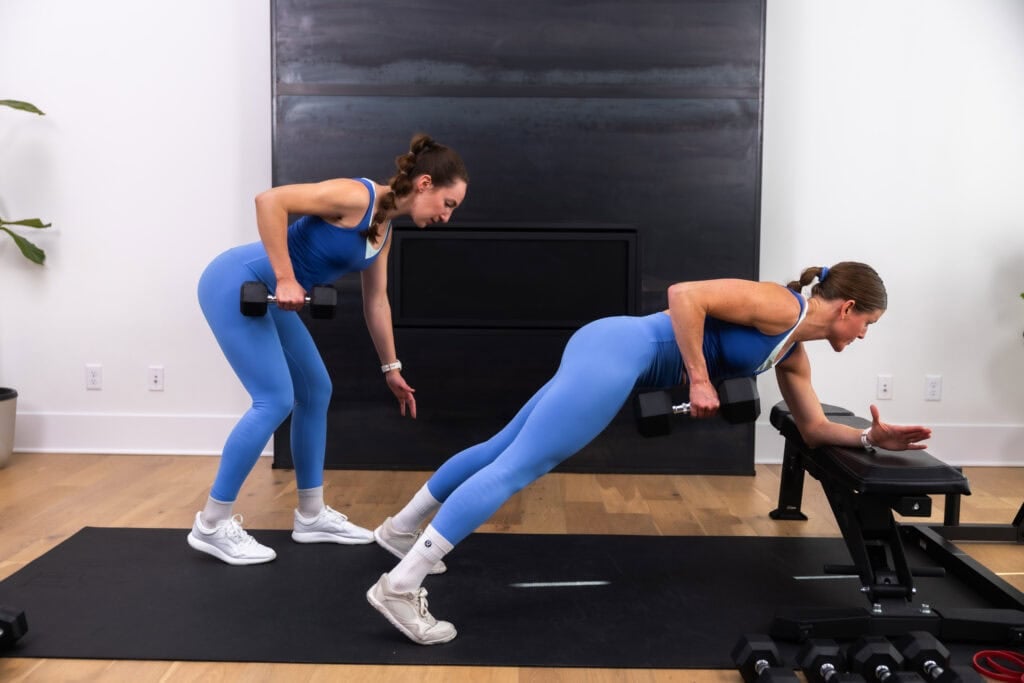
FAQs
In order to build strength and muscle, you need progressive overload. Progressive overload training is essential for muscle growth because your body only builds muscle in response to stress. If you lift the same weights with the same reps every week, your body has no reason to change. Overloading the muscles consistently forces them to repair, rebuild, and grow stronger to handle future stress.
I suggest starting with 5-10% of your body weight. So if I weighed 150 lbs, using 5-10% of my body weight would be 8-15 lb weights. You can always start with what you have access to and increase weights as you become more skilled in form and technique.
A good rule of thumb is to keep increases under 10% each week to allow for gradual adaptation while avoiding injury. This means if you can perform 10 reps on week 1, you may aim for 11 reps on week 2, while keeping the same weight. The last 2-3 reps of each exercise should be challenging, but allow you to complete the move with that amount of weight with good form.
How To Download and Use This Workout Plan
- Download and Print the Progressive Overload Workout Plan PDF by clicking here, or bookmark this webpage for reference as weekly workouts are outlined below.
- Save the workout calendar to your mobile device home screen for easy access.
- Open this workout calendar pdf in the safari browser on your phone.
- Tap the bottom arrow in the center of your screen.
- Select ‘Add to Home Screen’.
- Hover over and then click on the bold text each day to access the full video on nourishmovelove.com. Or scroll down to find the daily workouts linked below.
- You can also access all of the home workout videos on this workout challenge calendar on YouTube via this YouTube Playlist: Overload 30 Workout Program.
- Share your daily workouts with me by tagging @nourishmovelove on social and ‘Pin’ the daily workouts on Pinterest so you can do them again.
Pin this Free Progressive Overload Workout Program:
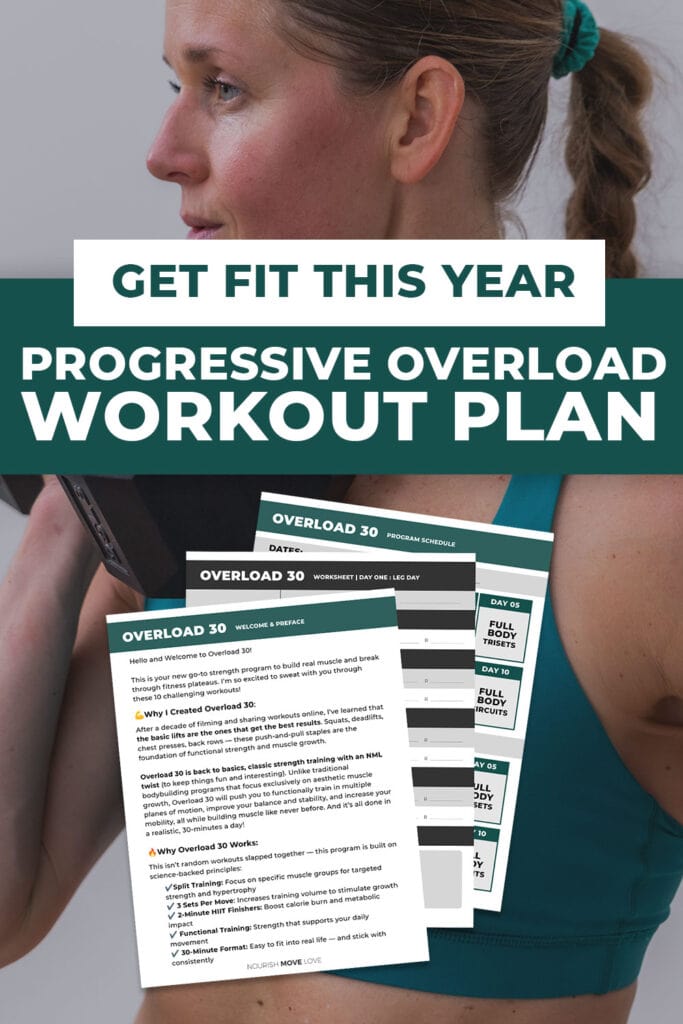
Note: before beginning any new exercise program you should consult with your physician or midwife. The information provided with this workout challenge is intended for general information and use; it does not include specific, individualized recommendations and is not intended as medical advice. Before you begin any new exercise program Nourish Move Love recommends that you consult with your physician. Nourish Move Love primarily educates clients to assume more personal responsibility for their health by adopting a healthy and active lifestyle.
This post does include affiliate links and I earn a small commission on products purchased using these links. All words and opinions are my own. Thank you for supporting Nourish Move Love.










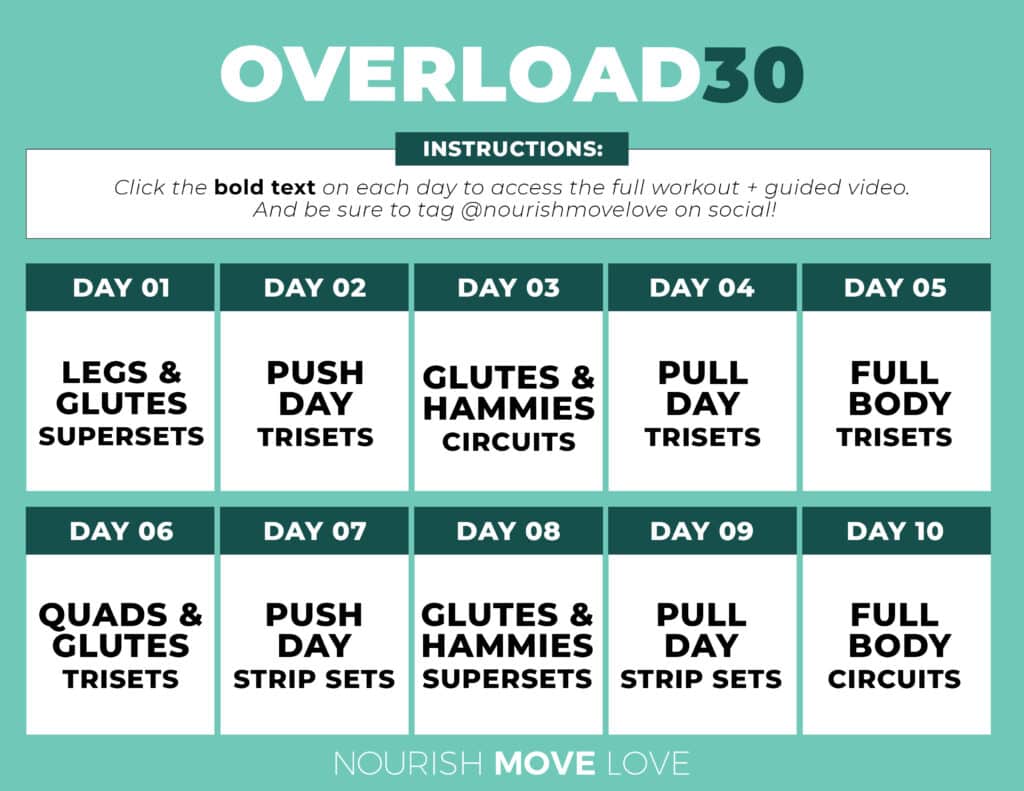
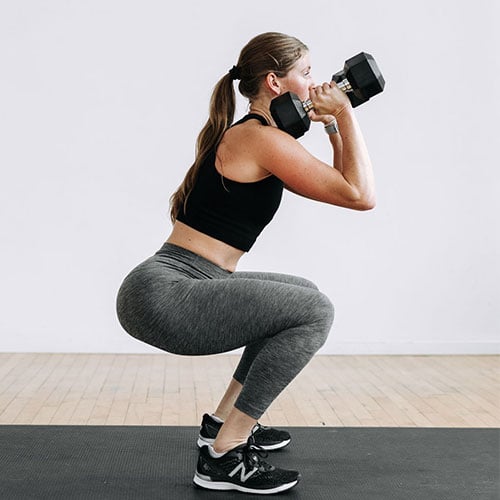
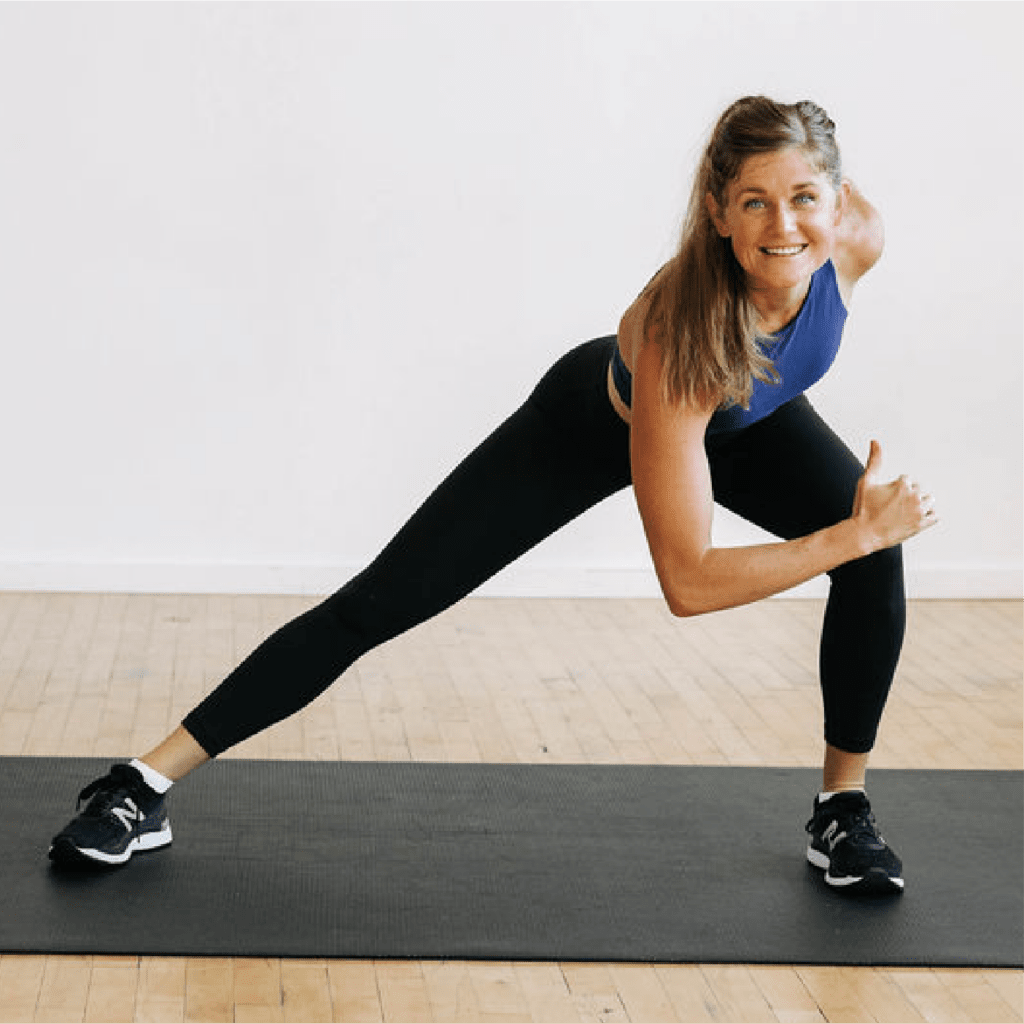
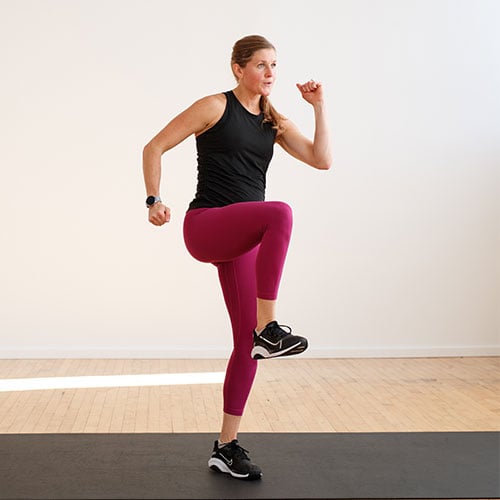
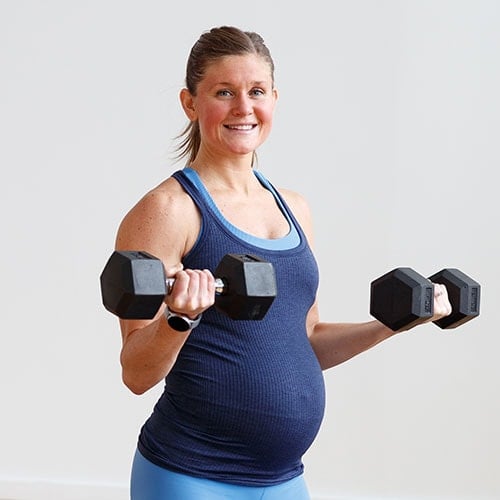

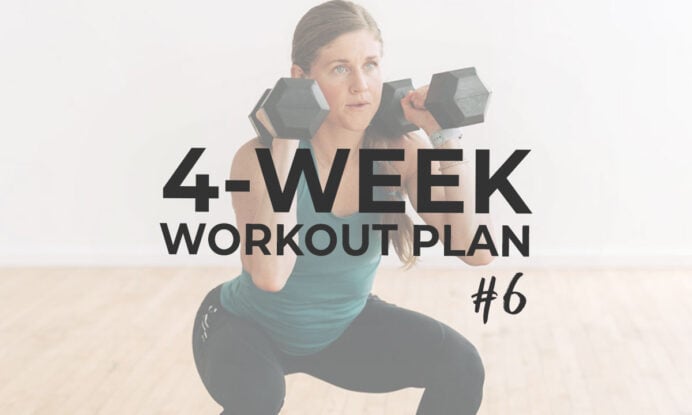
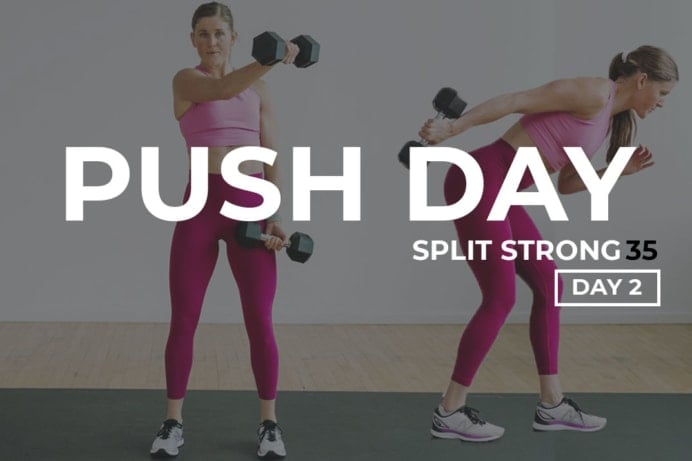
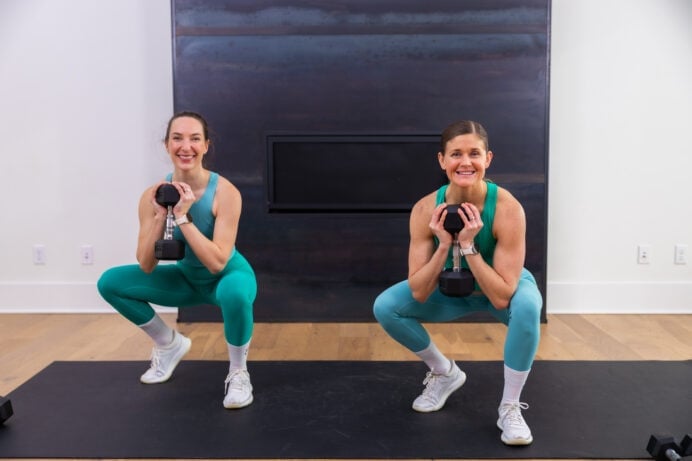
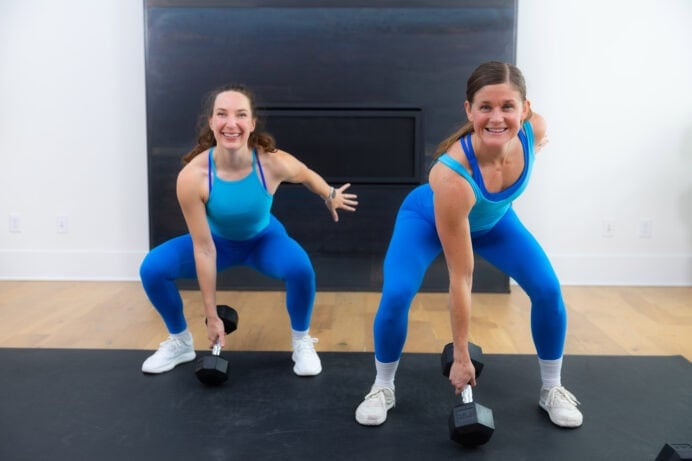
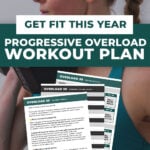
If I want more progressive overload workouts do any of your other programs do this? Just wondering what to do next to keep building strength
Hi LaToya! All of my programs are designed to build strength! This blog post explains how I’d recommend working through all of my programs if your goal is to build strength: https://www.nourishmovelove.com/start-here/
Thanks for following along! -Lindsey
Hi there, I love your videos! I am excited to start this program, however I am curious if it is a good program to pair with light jogging and returning back from postpartum at 3 months.My goal is to return to jogging and rebuilding strength, is there any of your videos you might add in or swap with that in mind? I did complete the HIIT workout plan right before this.
Hi Liz! You can certainly add light jogging onto this program if you’d like to – I’d recommend adding a run to the arm days and potentially the full body day as well if you’re up for it! Keep up the great work! -Lindsey
Hi, can’t wait to start the new program Tom, is it pregnancy friendly?
Hi there! Rachel offers modifications throughout the entire program that you can follow along with. Slow down the moves as needed and make things low impact if needed as well! Can’t wait to get started! -Lindsey